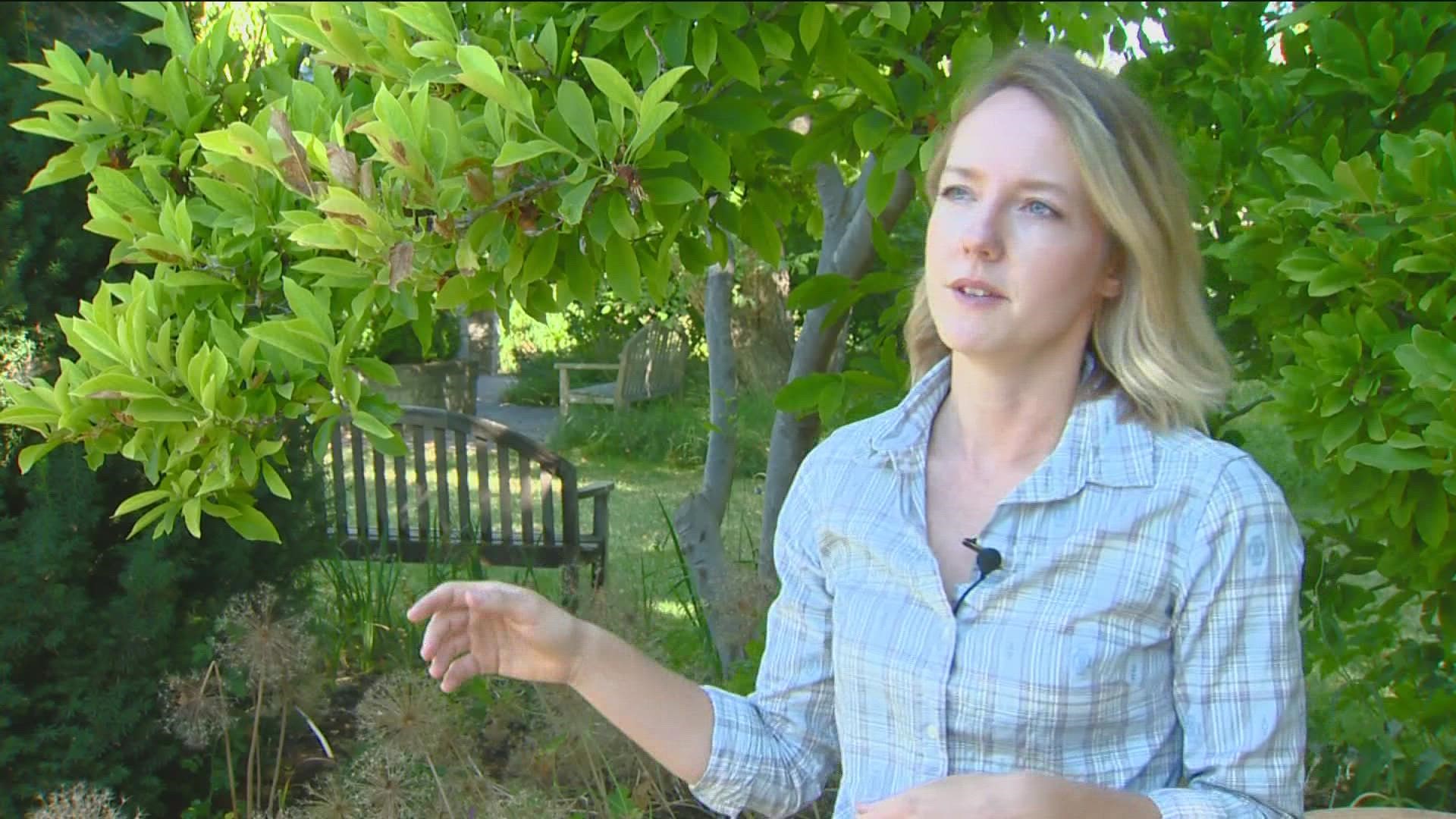BOISE, Idaho — A dry winter followed by a cool, wet spring, and now a dry and scorching summer; some of the trees and plants in your yard might be struggling, and the last thing you want to do is lose a tree and have to replace it.
On this segment of "You Can Grow It", Garden Master Jim Duthie talks with a tree expert, Idaho's plant doctor, to get an idea of some common tree issues you may be dealing with and what you can do to fix them.
Trees in landscaping are beautiful, but they are also an expensive investment for home landscapes. To keep them healthy, you need to be aware of how to maintain them and address problems early on.
Idaho's plant doctor, Sierra Laverty, showed examples of trees from the Idaho Botanical Garden that are suffering from some issues that may be affecting your trees at home.
“I’m standing here at the botanical garden under two magnolia stellatas that were planted about 30 years ago," Laverty said. "Unfortunately, both of these trees are experiencing some pretty severe iron chlorosis.”
Iron chlorosis occurs when a plant is unable to get enough iron into its leaves. That function is essential for chlorophyll production, which gives the leaves their green color.
“Iron is not very mobile in our soil," Laferty said. "So here in southwest Idaho, our soils are very basic; very high ph, alkaline, all those terms mean the same thing. Because of that, iron and a lot of other metals are very limited in how they can move in the soil.”
To alleviate this problem, you can apply native iron to the root system in the springtime right before the leaves start to develop on the tree.
“Try to apply that to the entire root system. It’s expensive, and you’re trying to cover a pretty large area because tree roots grow out as far as the tree is tall, so you have to think about that entire root system,” Laferty said.
One way to test if iron chlorosis is the problem is to spray liquid iron, but only after the weather cools down.
“You can spray this in the spring, spray it in the fall, on cool, cloudy days, and if you see the leaves greening up in just a matter of days," said Laferty.
Spraying the liquid iron is only a temporary fix, though. New emerging leaves will not be lush and green since the iron has not been pulled up into the root system.
"This tree is a Tatarian maple, known as hot wings," Laferty said. "It’s a great alternative to other maples that tend to develop iron chlorosis like we saw with the magnolia."
Tatarian maples are fantastic plants for this area because they are really well-adapted to our region and soils. They like the higher alkaline, so it is less likely they will develop iron chlorosis. It is also a great specimen tree because the brilliant bright samaras catch the sun.
"Samaras are the little helicopter-shaped seedpods, actually the fruit of the Tatarian maple," Laferty said.
As healthy as a tree can look, they can still have underlying problems.
“So this tree does have a bacterial blight," said Laferty. "It’s doing really well despite having this blight, but if you look closely at this leaf, you’ll see these very angular leaf spots.”
Bactericide and fungicide sprays will help this. For some trees, the blight can be more of an aesthetic issue and probably will have no affect on the tree’s overall health.
“I’m seeing a lot of issues now because of that winter dry spell, because of that desiccation that stressed the trees early on," Laferty said. "Then we had a month and a half of solid rain. That also accentuates different fungal diseases.”
However, Sierra said a lot of tree problems can be prevented through proper watering.
“If you’re irrigating properly, you should be doing a deep but infrequent irrigation,” Laferty said. "Fine-tuning irrigation is an art and a science, and it’s really critical for growth in the treasure valley.”
August is a good time to take a close look at your trees. Catching and treating some of these issues early on will increase the chances that your trees will be healthy and live for a long time.
Issues such as iron chlorosis usually have less impact on native tree varieties than on ornamental specimen trees found in our developed landscapes. But if you are concerned about issues with your trees, take a picture, or a leaf sample, to a local nursery, or call your county extension office for advice.
Watch more Local News:
See the latest news from around the Treasure Valley and the Gem State in our YouTube playlist:

